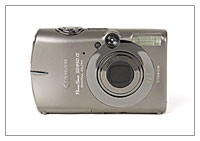
The 12-megapixel Canon PowerShot SD950 IS is Canon’s current top-of-the-line point-and-shoot digital camera. It has a 3.7x optical zoom lens with image stabilization and a 2.5-inch LCD display as well as an optical viewfinder. All this is housed in a handsome, pocket-sized titanium body.
Want to buy a Canon PowerShot SD950 IS?
Compare prices and shop For Canon PowerShot SD950 IS >>
| Canon PowerShot SD950 IS Studio Test Images | ||
| ISO 80 Sample >> ISO 100 Sample >> ISO 200 Sample >> ISO 400 Sample >> ISO 800 Sample >> ISO 1600 Sample >> |
||
Introduction
Last summer, I reviewed the Canon SD850 IS and thought it was the best point-and-shoot digital camera I’d ever used. So when Canon announced the 12-megapixel PowerShot SD950 IS I was very interested. I was skeptical about the image quality of the 12-megapixel sensor, but interested, nonetheless. I haven’t had my own point-and-shoot for a while and since I loved the SD850 IS I just went ahead and bought the SD950 IS.
I’ve shot well over 1000 photos with the SD950 IS since I bought it in November. I’ve done all kinds of point-and-shoot photos, but most of my SD950 IS photos have been taken on the ski slopes. And that’s what I really wanted it for – point-and-shoot convenience for mountain biking, skiing, and hiking. My main concern was whether Canon had to compromise image quality so they could have a 12-megapixel point-and-shoot camera. I don’t want to give too much away – but I have very few complaints. Read on to learn more…
- Key Features
- 12-megapixel sensor
- 3.7x optical zoom lens
- Image stabilization
- ISO 80 to 1600
- Digital Tele-Converter
- Face Detect auto focus
- 17 Shooting modes
- Optical viewfinder
- Movie mode
For me, the most important features of the Canon PowerShot SD950 IS are the 12-megapixel sensor, the image-stabilized lens, and the optical viewfinder. Most cameras are trading in optical viewfinders for a larger LCD display. But I like the accuracy of an optical viewfinder for action photo panning.
As far as exposure control goes, the SD950 IS is pretty standard point-and-shoot. It’s got an auto mode, a “manual” mode that offers exposure compensation, and 11 scene modes, including Beach, Fireworks, Kids & Pets, Portrait, etc. Besides exposure compensation control, the Manual mode also offers Stitch Assist panorama shooting, Digital Macro, Color Accent, and Color Swap modes. The SD950 IS can also shoot movies, with 6 different movie modes; Standard, High Resolution, Compact, Color Accent, Color Swap, and Time Lapse. In the Standard movie mode you can select your resolution and shoot until your memory card is full (maximum – 4GB). The Time Lapse movie mode will shoot for up to 2 hours at 1 or 2-second intervals to make and 8 or 4-minute movie.

The image-stabilized f/2.8-5.8 3.7x zoom lens is equivalent to 36-133mm on a 35mm camera. The SD950 IS also has 15x digital zoom as well as 1.5x and 2x Digital Tele-Converter settings. There are three focus settings – Normal, Macro, and Infinity. The Macro setting will focus as close as 5cm/2.0 in. (at the wide zoom setting). There’s also a Digital Macro mode which limits the shooting area to digitally zoom you in even closer.
Canon’s Face Detect is one of the three “AF Frame” options selectable in the main menu. The options are Center, AiAF, and Face Detect. Center uses only the center point, AiAF is an intelligent auto focus system which determines the most likely subject and focuses on it. Face Detect auto focus detects and focuses on people’s faces and also sets exposure for faces instead of the scene as a whole.
Processing is powered by Canon’s new DIGIC III processor, which Canon claims makes start-up and shot-to-shot time faster, as well as keeping shutter-lag to a minimum. The DIGIC III processor is also responsible for image processing and longer battery life.
One important feature that’s missing is a live histogram while you’re composing photos. There is a histogram display option when images are being reviewed. However, I didn’t even realize there was no live histogram until I was writing this review. So maybe the SD950 IS’s excellent exposure metering makes the live histogram feature superfluous.
Camera Menus
 Canon PowerShot SD950 IS capture mode with image info |
 Canon PowerShot SD950 IS FUNC menu w. exposure compensation selected |
|
 Canon PowerShot SD950 IS playback mode |
 Canon PowerShot SD950 IS playback mode with image info and histogram |
|
 Canon PowerShot SD950 IS main menu |
![]()
Design
Canon hasn’t altered the design of the SD950 IS compared to previous cameras. Aside from the titanium body, it still has the same curvy, compact, pocket-sized design. Why mess with something that works? The controls are all laid out on the right rear of the camera where they’re easy to reach with the right thumb. The camera’s metal body is smooth and silky to the touch, but it’s not really slippery. The Mode Dial on the rear operates as a thumb rest/grip, and the Canon text on the front of the camera is raised and acts as a subtle grip for your index finger. Besides the controls, the rear of the camera has a 2.5-inch LCD display and the optical viewfinder.
 |
 |
|
| Canon PowerShot SD950 IS 2.5-inch LCD display, optical viewfinder and controls | ||
![]()
The main way the SD950 differs from other PowerShot SD-Series cameras is the sexy titanium body. In theory the Ti body should be lighter and stronger. I don’t know if that’s the case or if it even matters. What I do know is titanium looks super cool and manly and I deserve it!
Camera Experience
Being a point-and-shoot pocket camera, the Canon PowerShot SD950 IS entails some compromises. It isn’t a super fast camera. Nor does it offer a lot of manual control. What it does have is great exposure metering, easy portability, a very good image-stabilized zoom lens, and a 12-megapixel sensor. And for anyone looking to upgrade from previous SD-Series camera, it offers familiar controls and trustworthy performance.
I’ve been using my SD950 IS for all kinds of quickie point-and-shoot photos. But mostly it’s been on the shoulder strap of my backpack when I’m skiing. I’ve shot with it at temperatures as low as 6 degrees Fahrenheit (-14 C) and the only problem I’ve had is frozen hands. The SD950 IS is not a camera you’re going to be able to use with gloves on. Battery life has been excellent – even in the cold. It’s powered up and shut off fine, and taken pictures perfectly in all conditions. I’ve even gotten it a bit wetter than was probably intended, when snow got into the little case I use. But that hasn’t caused any problems, either. The only issue I have had is what appears to be a piece of dust on the sensor. It wasn’t there when I got the camera. But it’s in every image now – although it can really only be seen in images where it appears in the sky. With a digital SLR you could take off the lens and blow off the sensor to get rid of a piece of dust. But with a point-and-shoot you can’t do anything but send in the camera, which is what I guess I’ll have to do.
I mostly use the “M” manual exposure shooting mode, which offers white balance, exposure compensation, My Colors, image quality, and metering controls. Generally, I’m not satisfied with simple point-and-shoot digital cameras because I like having direct shutter speed and aperture control. But Canon’s SD-Series cameras have such excellent exposure metering that I don’t miss manual controls as much as I expected. I do use exposure compensation most of the time – shooting a test photo, adjusting the compensation to lighten or darken my photo, and then checking the histogram on playback to make sure I have a good exposure.
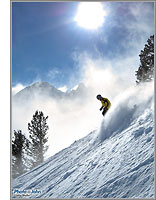
As I mentioned earlier, one of the reasons I bought the SD950 IS was the optical viewfinder. A large LCD is fun to look at but if you’ve ever tried to follow a moving subject with one, you know how hard it is to pan smoothly and keep your subject in the frame. If you like to take action photos an optical viewfinder is a valuable feature. Since I shoot a lot of mountain bike and ski photos, it’s a necessity. If you don’t need it and you like Canon’s SD-Series cameras, take a look at the PowerShot SD870 IS, which has a wider lens, larger LCD, and no optical viewfinder. I wish I could have it all. My main complaint about the SD950 IS is the wide-angle end of the zoom. The 35mm wide end (35mm equivalent) isn’t wide enough. I want at least 28mm on the wide end – 24mm would be even better. But if I have to choose between a true wide-angle lens and an optical viewfinder, I’ll take the optical viewfinder. Being able to get action shots is more important to me than the wider angle-of-view. Listen up, Canon! I want an SD970 IS with both an optical viewfinder and 28mm wide-angle lens. You make it and I’ll be first in line to buy it.
I also wish the SD950 IS had a sports scene mode or continuous auto focus option. Continuous AF systems work really well now and the addition of a sports scene mode and/or continuous AF would make this a much more flexible camera. The SD950 IS offers three AF options in the main menu: Center, Face Detect, and AiAF. I pretty much stuck to the Center AF Frame option. I’ve used AiAF plenty in the past and while it really does find and lock onto a subject very well, it’s not predictable enough for me and I find myself having to reframe and refocus too often. Canon’s Face Detect mode is very impressive. It finds and focuses on faces and if the metering mode is set for evaluative, it will also expose for the subject’s face. If you move the camera or your subject moves, the Face Detect system will stay locked onto the subject’s face. Only when you depress the shutter release halfway does the auto focus lock. The photo of Michelle playing pool was taken using the Face Detect auto focus mode and it worked flawlessly, even with her face way off to the side of the frame. I did have trouble when I tried to take pictures of people with ski gear on. The Face Detect system seemed to be confused by goggles and hats. But for normal people photos, it’s very impressive.
Image stabilization is another important feature for me. The SD950 IS has Canon’s proven optical image stabilization. It means more usable photos in all kinds of conditions – especially low light. It won’t help freeze a moving subject. But in low light, when you’re zoomed in on a distant subject, or when your hands are shaking because they’re freezing – it helps ensure sharp, usable photos. I don’t even want to use point-and-shoot cameras without image stabilization anymore. I love it and I think all compact digital cameras should all have it.
A few other things I like about the SD950 IS are the Stitch Assist panoramic mode, the Custom My Colors setting, Slow Synchro flash setting, and the Digital Tele-Converter. The Stitch Assist panoramic mode is stashed away in the M mode FUNC menu. It gives provides a frame to help accurately overlap images for an easily stitchable panoramic image. The included Canon software has a program called PhotoStitch you can use to assemble your panoramic images. I use the Photomerge feature in Photoshop to stitch my panoramic photos.
One of the flash options in the main menu is Slow Synchro. Usually cameras use a fast shutter speed in conjunction with flash to freeze the subject. But this often results in a bright subject against a black background. The Slow Synchro setting allows slow shutter speeds for more ambient light, in flash photos. This opens up the background and gives flash photos a softer, more natural feel. I like moving the camera on purpose to add blur to Slow Synchro flash photos. Slow Synchro is the party photo setting!
 Canon PowerShot SD950 IS Slow Synchro Flash |
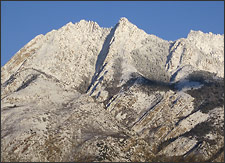 Canon PowerShot SD950 IS Digital Tele-Converter |
![]()
Generally digital zoom is something to be avoided because it degrades image quality. However, I think the SD950 IS’s Digital Tele-Converter is a reasonable compromise. It limits the digital zoom to 1.5x or 2x – standard SLR tele-converter lengths. The 1.5x Digital Tele-Converter image quality is reasonably good if you need a little more reach and you can keep the sensitivity setting at ISO 200 or lower. I’m more on the fence about the 2x setting. But again, if you need the reach, it’s not going to ruin you to use it. It’s digital – shoot one photo with it and one without and make your decision later when you can look at them on the computer.
The My Colors feature is located in the FUNC menu and has 11 color styles to choose from, including Vivid, Sepia, B/W (black-and-white), Lighter Skin Tone, Vivid Green, etc. The Custom Color setting has sliders for Contrast, Sharpness, Saturation, Red, Green, Blue, and Skin Tone. You can adjust them to your taste and save the Custom Color setting so that the SD950 IS processes images to your specific taste. I left everything alone except the sharpness, which I moved to the lowest setting. The Direct Print button, just below the Mode Dial, can also be customized. I set it so I could access exposure compensation without having to go into the FUNC menu. The Direct Print button also controls the SD950 IS camera’s Auto ISO Shift feature, which shows a blue warning light when camera shake is likely. When you see the blue light in the Direct Print button, you press it and the ISO shifts higher to ensure a sharp photo.
Overall, my experience with the SD950 IS has been very good. I don’t expect it to perform like a digital SLR so I’m not upset if I miss a photo due to shutter-lag or slow shot-to-shot time. For point-and-shoot action photos, planning and technique are key. The important thing is it’s small, easy to take everywhere, and the image quality is excellent for a pocket-sized digital camera.
Image Quality
The SD950 IS’s exposure metering and white balance are great. This is especially apparent in snowy landscape and ski photos. Snow scenes are tricky and some photos were a bit underexposed – particularly photos taken while it was snowing. But the exposure compensation control made it easy to lighten them up. For photos that need some software correction there’s enough information to get good final images from all but the most underexposed photos. I pushed some images pretty hard and noise didn’t ever get too out of hand. The12-megapixel sensor’s 4000 x 3000 pixel resolution effectively minimizes noise. So even though noise is comparable to previous, lower resolution SD-Series cameras, that noise is smaller and less noticeable in prints.
Conspicuously missing is purple fringing – once standard in pretty much all compact digital camera photos. But I shot some backlit tree photos (see sample photo thumbnails, below), which almost always display some purple fringing. And the photos looked great. If there is purple fringing, it’s minimal enough to be a non-issue.
At ISO 80 and 100 the SD950 IS images feel almost like digital SLR files. They have a little more processing applied in the camera. But they still have a smooth, almost noise-free quality. At ISO 200 and above noise becomes apparent if you view files at 100%. However, I made an 8.5 x 11 inch print of the ISO 200 skier image in the Camera Experience section, and noise was not at all noticeable. I will happily use the SD950 IS at sensitivies up to ISO 800. After that it starts to get too chunky. But indoors, when you don’t want to use flash, I think ISO 800 is perfectly acceptable. Like most compact digital cameras, the SD950 IS has a tendency to overexpose and lose highlights. But that’s sort of a given with compact cameras. The trick is to try to always underexpose just enough to hold highlight detail.
Overall, I am very pleased with the image quality from the SD950 IS. When I can keep the sensitivity down at ISO 80 or 100 I feel like I’ve got near DSLR quality images. I can’t wait to sneak some SD950 IS photos past some magazine editors and into print!
 |
 |
 |
 |
 |
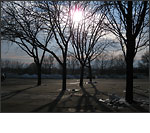 |
| Click on thumbnails to view sample photos. |
![]()
Conclusion
The Canon PowerShot SD950 IS digital camera packs a lot of punch in a pocket-sized point-and-shoot. The 12-megapixel sensor is for real with 4000 x 3000 pixel images and great image quality. The excellent metering and image stabilized lens mean you can trust the SD950 IS to come through with great pictures in most circumstances. The camera does fall short for action photos, with noticeable shutter-lag and poor shot-to-shot time. And I wish Canon included a sports scene mode to help people get better photos of their kids playing soccer or the family dog chasing a Frisbee. My biggest problem with the camera is the wide end of the lens. The 35mm (35mm camera equivalent) wide end just doesn’t cut it. It’s ok when you have plenty of room. But when space is tight it’s frustrating.
Who Should Buy It
People who want the best possible image quality from a pocket-sized digital camera should pony up for the Canon PowerShot SD950 IS. I don’t think it gets any better than this. Photographers who want more control or versatility should look elsewhere and will likely end up with something larger. The SD950 IS will make a great pocket point-and-shoot and party camera for people who want the best. It will also be a great secret weapon for pros who want something that fits in their pocket.
- end -

Contents of the Canon PowerShot SD950 IS Box
|
Other Resources:
Shop For Canon PowerShot SD950 IS >>
Canon PowerShot SD950 IS User Reviews >>
Write a Canon PowerShot SD950 IS Review >>
Canon PowerShot SD950 IS Camera Specs >>
Canon PowerShot SD950 IS Sample Gallery >>
Canon Web site >>
Canon PowerShot SD950 IS Camera Manual >>
All Digital Camera Pro Reviews >>
Digital Camera Buyer’s Guide >>
All Digital Camera Sample Images >>
drg Profile >>


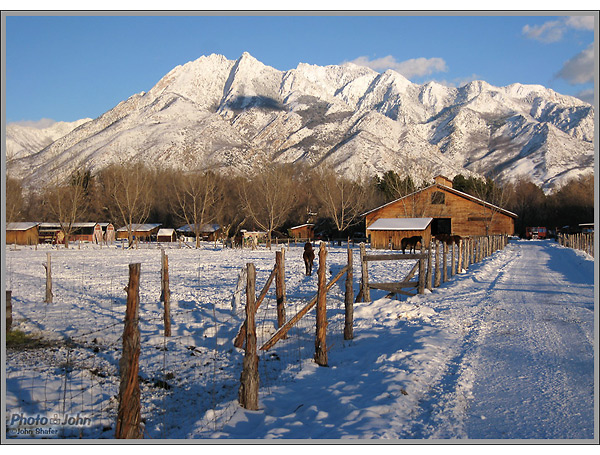




Hi, I also have the SD950. I am a beginner in terms os photography. I am having a problem that I simply cannot understand, and that is: When I am doing close-up photos, I have a very difficult tme getting the camera to focus.I have tried all sorts of combinations of camera distance, no zoom, some zoom, and more. But I still have a very difficult time with this. I push the shutter button halfway as instructed, and what most often happens is that the camera will go through a range of focusing, meaning that in the timeframe of about a second, it tries to find the correct focus. What I have noticed is that it finds the exact focus about 1/2 second into this process, but then loses it by the time it is over. I hope I am making sense here, LOL! Like I said, I am a beginner, so please bear with me.
Do you have any suggestions as to how I can get my SD950 to take well focused macro shots? I would really appreciate any help that you can provide.
Thank you for your time.
Thanks for posting a comment, Jim. I hope you’ll post a review for your camera when you feel you’ve used it long enough to judge it fairly. Here’s a link to the user SD950 IS user review page:
Read and write Canon PowerShot SD950 IS reviews >>
Ok, on to your focus problem. First of all, you didn’t say whether you were using the camera’s macro mode. If you aren’t look it up in the manual and try that. Also, how closely are you trying to focus? How much zoom are you using? The macro will allow you to get closest when the lens is zoomed all the way out. You won’t be able to get very close if you zoom at all. And if you’re really close to your subject, any movement on your part can throw off the focus. That’s one reason macro photographers use a tripod. You can fudge it by using a higher ISO setting. That should get you a smaller aperture and more depth-of-field. You said you’re a beginner so some of that may have gone right past you. That’s ok. Answer my questions as best as you can and try my suggestions. You may also want to post a question on our Digital Cameras forum. That’s usually a better way to get help than posting a comment on the review.
Nice review written and excellent camera canon launched indeed. However there is one more camera A650 IS that also needs to take into consideration before making the decision to purchase a camera.
The Canon PowerShot A650 IS is a fine camera and it probably uses the same 12-megapixel sensor. But it’s not in the same class as the SD950 IS. It’s a very different camera, designed for a different photographer. It won’t fit in your pocket like the SD950 IS and it doesn’t have the titanium body. The Canon A-Series PowerShots are excellent. I think of them as “family” cameras. They’re do-it-all cameras. But they’re not pocket-sized point-and-shoots. For anyone who wants to compare, here’s a link to our Canon PowerShot A650 IS user reviews >>
I’m still loving my SD950 IS. I’ve been testing a lot of different point-and-shoots since I wrote this review. And I’ve yet to use a camera that challenges this one. I’m hoping that Canon will come out with a new wide-angle version before the end of the year. I would buy that!
ON THE ABOVE REVIEW FOR THE CANON SD950, WHAT TYPE OF MEMORY CARD DID YOU USE IN THE CAMERA FOR THE PICTURES THAT ARE ON THIS SITE. THANKS
Nona-
I’m not sure why you’re interested in the memory card. It doesn’t have any effect on the image quality. But most of the time I use a 4GB Lexar SDHC memory card with my SD950 IS. Any memory card will deliver the same image quality, though. For video a higher-capacity SDHC video card will be better just because video requires so much more storage. But for still photos, I’m generally recommending 2GB SD memory cards for compact cameras, just because 2GB cards are so cheap right now.
Thank you for your in-depth review of the SD950IS. Because of your review, I am now off the fence and purchasing one. Keep up the great work.
Glad to help, Dave. The only thing I don’t like about the SD950 IS is the lens isn’t wide enough for my taste. But for me, I’ll give up the wider lens for the optical viewfinder. I told Canon I would buy a wide-angle version of this camera in a hot second. But they haven’t made one yet. I was hoping for an introduction at Photokina, but no dice. I think they’re dropping the ball there. But I am still very happy with my SD950 IS. Image quality is awesome for a pocket camera and performance is also very good.
My problem with this camera is that I have to resize every photo I take in order to print 4″ x 6 ” photos. This is one of most popular print sizes and Canon failed to provide 3264 x 2176 resolution so that this size of photos could be printed. I seem to be the only person aware of this deficiency. Am I missing something?
I have the very similar camera – the direct predecessor – the SD850 IS, with a 3.7x zoom, a few less megapixels (makes no difference as the CCD is the same size), and the same 35mm wide-angle start for the zoom. Next time, I’m going to buy a camera with a 28mm wide-angle start. I can’t tell you how many times i’ve backed up to the wall and then held the camera above and behind my head, against the wall, trying to get everything into a picture, usually to no avail! Canon needs to offer a 4x or 5x zoom on these cameras that starts at 28mm.
We also have an Olympus 700 ultra zoom. When I want take good pictures indoors, like at a wedding or when my kids are bowling with YMCA adventure guides, there is no contest. The Olympus beats the Canon by 2 ISO’s at least. The Olympus is good up to 800 or 1200 ISO, whereas the canon craps out at about 300-400 ISO. The olympus takes much sharper pictures at 2 megapixels than my Canon takes at 8 megapixels. The megapixels don’t matter, all that matters is the size and noise qualities of the CCD.
Another problem with these cameras that is never mentioned, is that the LCD preview is nothing like the actual picture you’re about to take. The exposure in the LCD preview is usually \perfect\, whereas the actual picture will be \washed out\ or \dark\. It’s s frustrating !! You look at the LCD preview and the exposure looks perfect, you hit the shutter button, and you get a washed-out picture because maybe you hit exposure compensation the last time you used the camera!! Even in some situations I’ve found with NO exposure compensation, the LCD preview looks perfect and the picture is dark !! CAREFULLY TRY OUT THE CAMERA IN A VARIETY OF INDOOR LIGHTING SITUATIONS BEFORE YOU BUY !!
this is the camera ever and i am the studio work